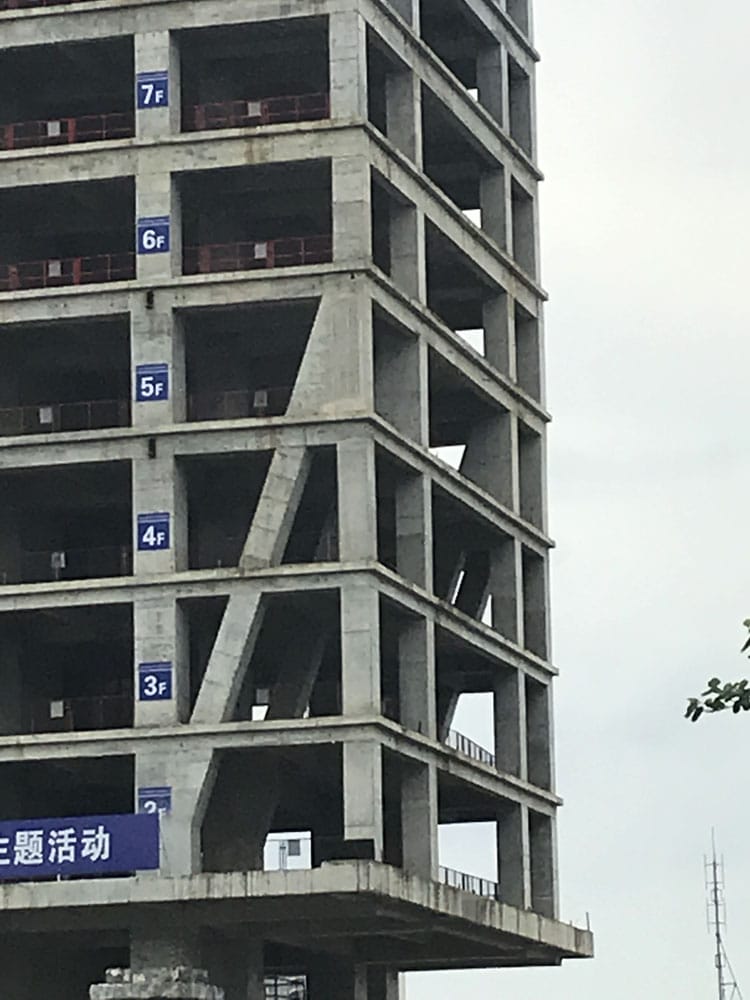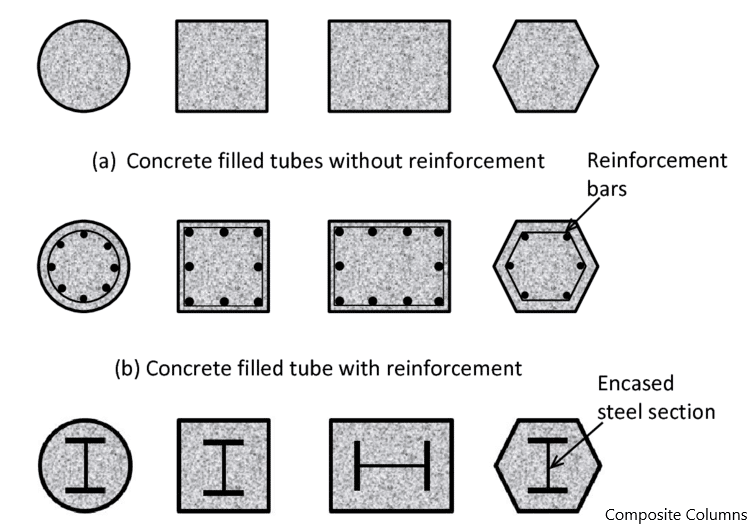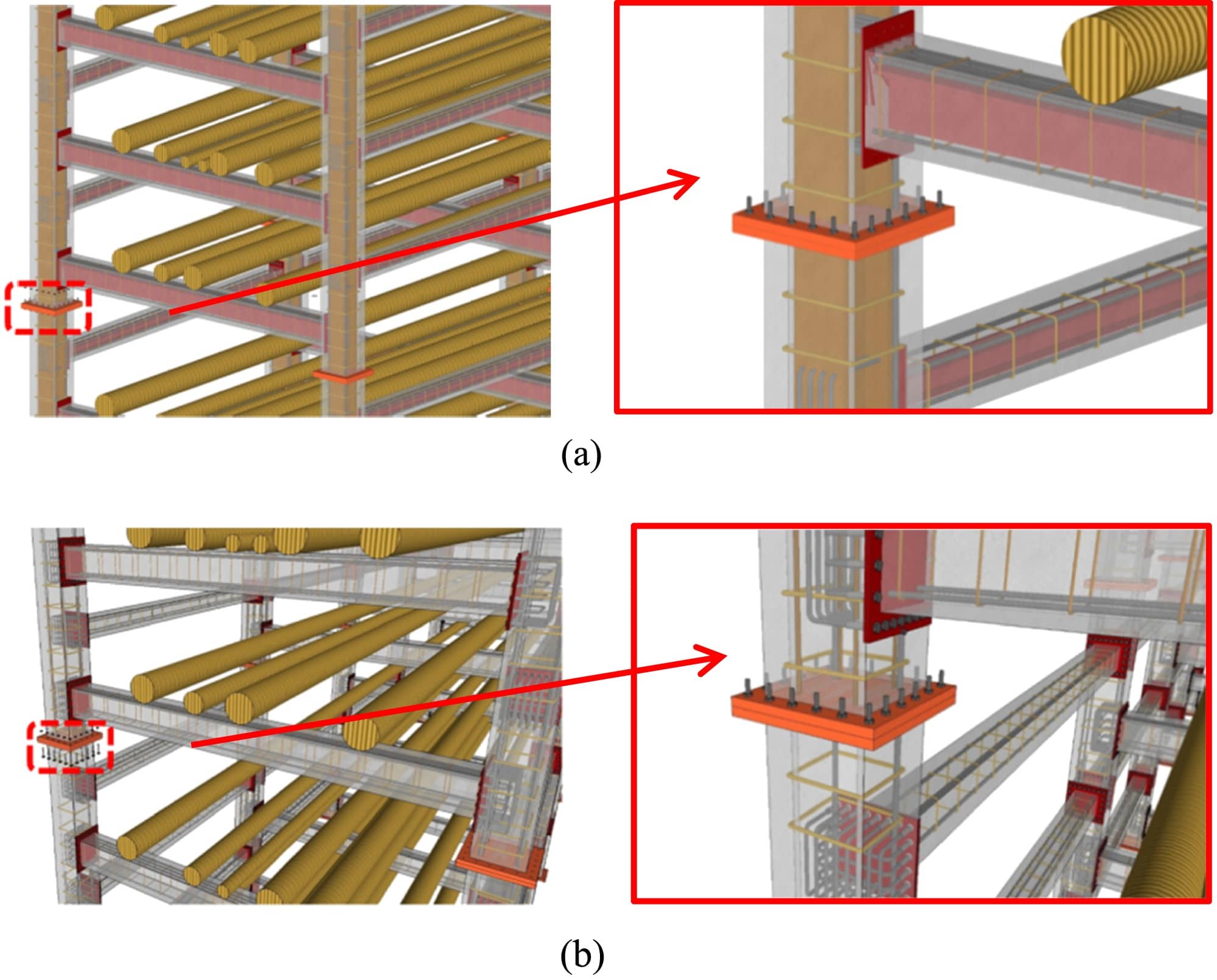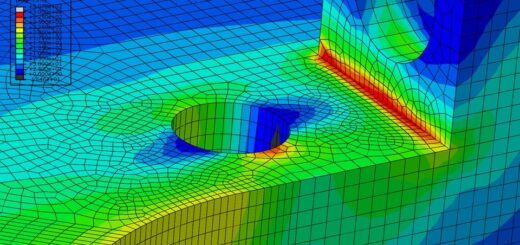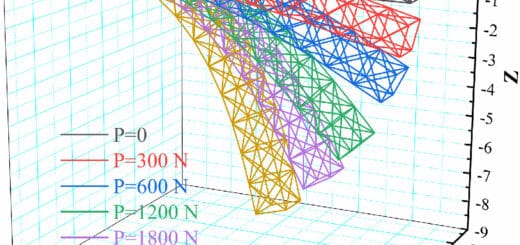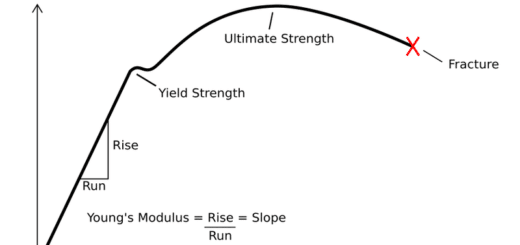Types of Columns in Construction
Types of columns are mainly categorized based on the types of material to be used in the construction and based on structural behavior.
Let’s discuss all types of columns in detail.
Classification of Columns Based on Cross Section
- Circular Columns
- Square Columns
- Rectangular Columns
- “L” Shape Columns
- “T” Shape Columns
Classification Based on Construction Material
- Concrete Columns
- Steel Columns
- Timber Columns
- Composite Columns
- Stone Columns
- Brick Columns
Based on Different Types of Loading
- Compression + Bending
- Tension Columns + Bending
Based on Height of Column and Cross Section (Width)
- Short Column
- Slender Columns
Classification of Columns as per Lateral Load Resistivity
- Braced Column
- Unbraced Column
Other Types of Columns
- Stiffener Column
- Dummy Column
- Architectural Featured Columns
Let’s discussed in detail about different types of columns discussed above.
Concrete Columns
Concrete is one of the widely used construction material in the world as it is readily available and can be produced without much difficulty.
However, it not an environmentally friendly material that has a considerable carbon footprint.
The concrete column is a reinforced concrete element that carries the axial stress and the bending stress applied from the other elements such as beams, slab, etc.
Concrete as a material effectively contributes to the load carry capacity another structural element as it is strong in compression. Further, concrete columns have higher stiffness than other types of columns in the same scale.
Steel Column
Steel also a widely used construction material. However, due to the limitation in the steel as a material, some times use of the steel in construction is discouraged.
Steel is a lightweight construction material when compared with the concrete. Further, steel construction is faster than concrete construction.
The cost of the construction could be in the same range.
Tension Columns
Tension columns are not commonly used in the construction. They are used in a special event where we cannot continue the column through full-height form the foundation.
Columns are placed the hang the floor. Those columns could be vertical or angular.
In the bridge construction, the pile that carries the tensile forces acts as the tension columns.
Similarly, there are many special cases that we construct these types of columns to carry the tensile stresses.
They may be constructed from concrete or steel or from any other material.
Composite Columns
Construction of a column combing of two or a few materials is a composite column. These types of columns are not common in construction.
Structural steel, reinforcement, and concrete are the widely used materials to cast a composite column.
Composite columns have a very high load-carrying capacity than a genera reinforced concrete column due to the composite action.
Composite columns are widely used in high rise building construction. Difficulty in constructing the column has made them unpopular.
However, composite columns are more efficient in terms of load-carrying capacity when compared with other different types of columns.
The main construction difficulty is having the proper connection of lower-level and the upper level of the columns. We can not continually cast the composite column as there are different materials.
For example, the steel section embedded in the concrete need to connect to the upper level, and also the connection of the beams needs to be established before pouring the concrete.
Relevant standards published and as per the local guidelines, design of the composite columns shall be done. Construction aspects shall be taken into account when the detailed drawings are prepared.
Braced Columns
It is related to the lateral load resisting of the building.
If there is a system to bear the lateral loads applied to the structure without transferring them to the columns, those columns can be desing as braced columns.
For example, when there are shear walls in the building and shear walls are design to carry the lateral loads, columns in those structures can be considered as braced.
Unbraced Columns
It is the opposite of the brace column definition.
When the lateral loads applied to the structure, if there not elements like shear walls, they have to be born by the frame.
In such instances, columns are desing as unbraced.
Short Column / Slender Column
As the name implies, columns having a smaller height when compared with other types of columns are identified as short columns.
There are guidelines to check whether the column is short is not during the desing.
According to British standards, columns are classified as short as follows. The classification is based on the effective height and cross-section dimensions of the column.
When Column is Braced
lex/h < 15
lex/b < 15
where lex is column height and h and b are column cross-sectional dimensions.
When Column is unbraced
lex/h < 10
lex/b < 10
When the above ratios are greater than or equal to the limiting values, those columns are considered as the Slender column in the design.
Stiffener Columns
Stiffener columns are not considered as structural columns generally. Usually, they are constructed to maintain the stiffness of the infill wall systems.
For example, when constructing a brick wall in a larger panel, we construct stiffener columns and beams to avoid cracking the wall due to the thermal actions.
As a rule of thumb, when the area of the brick to be constructed within a frame is greater than 12m2, we construct the stiffness columns and beam to maintain the above mention limit.

